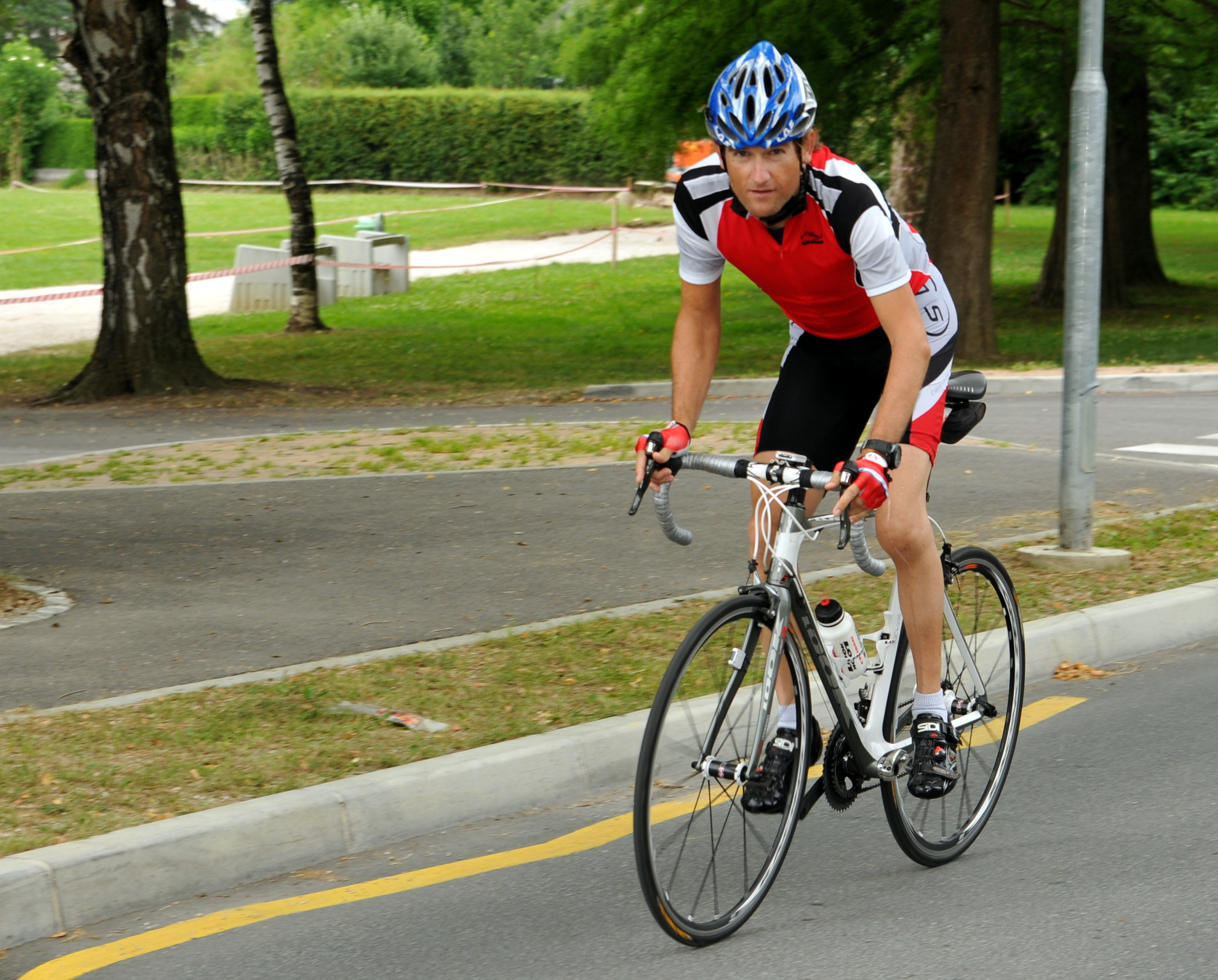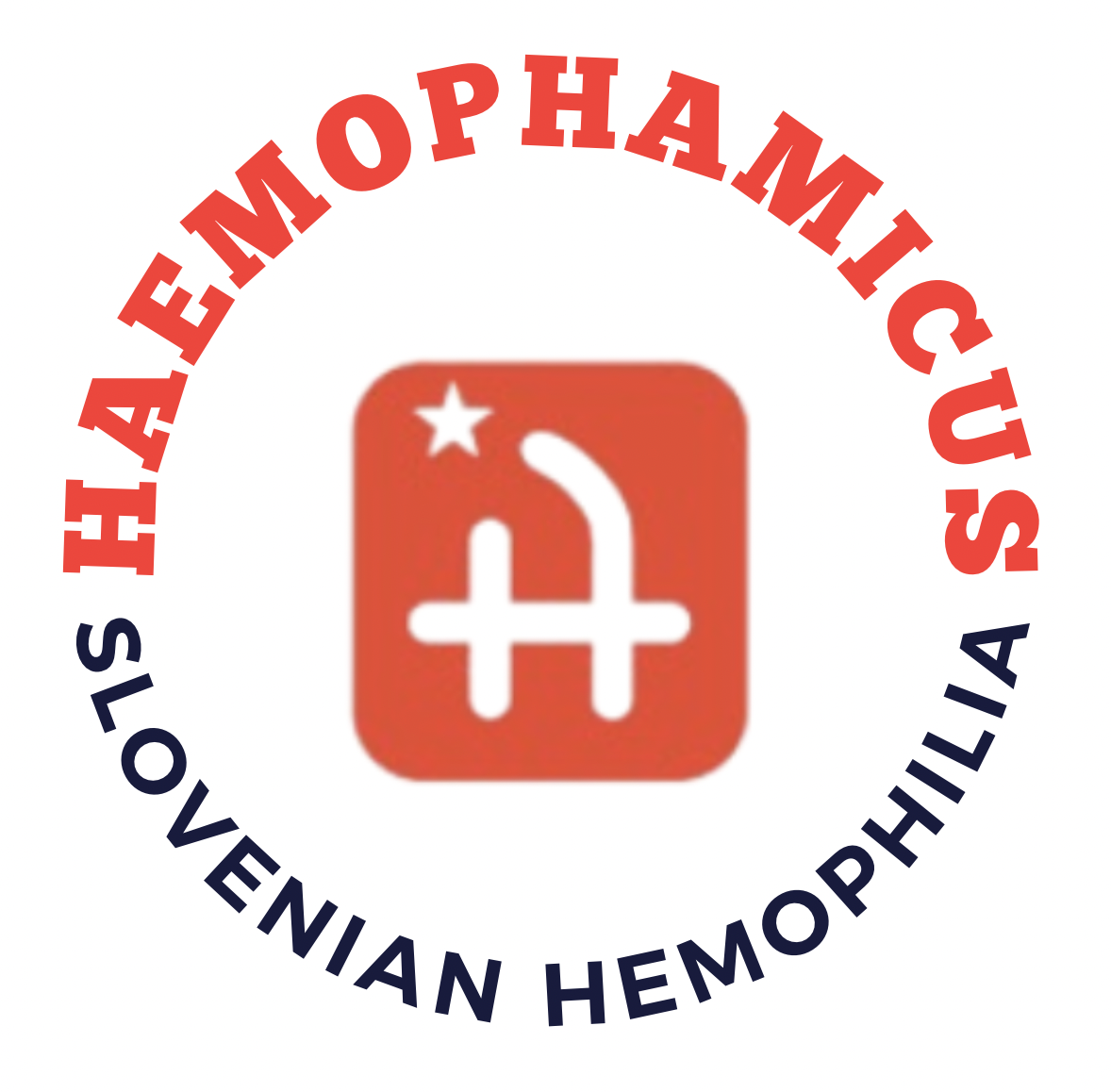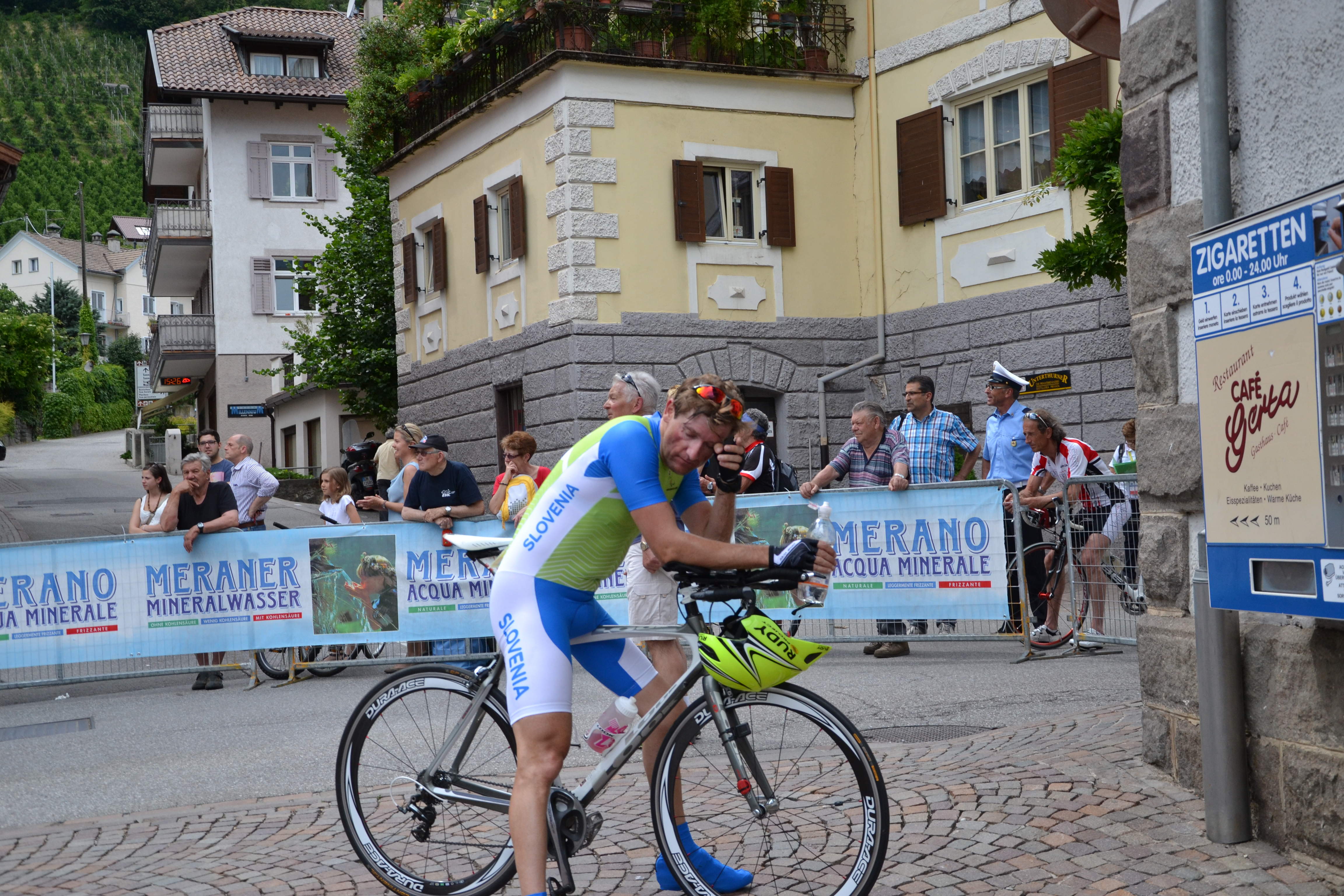Roman Pongrac, paralympic cyclist, without competitors in his category in Slovenia
Roman comes from Velenje/Slovenia/Europe and is a hemophiliac with a severe form of type A hemophilia. He will turn 53 this year. Despite the fact that the disease has left its consequences on his health to a degree of disability, Roman Pongrac is an avid athlete. He has been cycling for over thirty years and devoted to the profession cycling for a full twenty years. He attended many international and domestic races, championships, cups, ... Classic ones as well as time trials. He attended the Paralympics in London in 2012, where he achieved 25th place in the united competition of C1-C3 categories. We should explain that the lower the number beside the C mark, the greater the level of athlete’s disability, to illustrate the level of difficulty Roman has to face.
Our sports ace and absolutely the best cyclist among the hemophiliacs and in his own category in Slovenia gave a short interview to tell us more about his cycling career, his achievements and desires, as well as plans for the future.
Hello, Roman. We are curious to know when and why you took up cycling and when did you decide to pursue it professionally and competitively?
It is in my nature and in my character that I cannot sit still, in spite of the fact that I have hemophilia A, which is a severe type of the disease. I used to run after the ball a lot when I was younger, but it turned out not to be the best choice of sports. Usually there were bleedings of various kinds when we played ball games. After high school, in 1986, I started cycling. It gradually appealed to me. It took time for me to start serious trainings and competitions. The intent was for me to spend time outdoors in nature, ... My first equipment was also quite bad. I started on a mountain bike, which was awkward and heavy, it also had wide tyres. It was quite slow. Two years later, I rode with thinner tyres. Thinner tyres make the bike go faster. A few years later I bought my first specialised bike for road bicycle racing. My friends are partially responsible for convincing me to begin with the cycling sport. I started training seriously around the year 2000. I attended my first international competition in the year 2004, after being convinced by a friend who was already on the Slovenian national team. He encouraged me to try. He kept telling me that I was incredibly fast, good, that I absolutely have to attend a race at some point. My first race was for the European Cup in Switzerland (Goppingen). For me personally it was an extremely exhausting race. I remember getting to the finish line last of the competitors, so very exhausted that I couldn’t even put my socks on after the race. It was difficult. But I grew to like it and I kept training and racing.

How do you perceive the difference between yourself as a paracyclist and other, professional cyclists?
There are definitely differences. If nothing else, there is a difference in the equipment and the staff. Better national teams, the bigger teams, such as Italy, France, Spain, England, ... have decent conditions and subsequently achieve better results on account of everything they are offered. It was difficult to race with the equipment and all the support available. When I began, I had no financial support, no sponsors. This changed, when I attended the Paralympics. Things turned for the better, I could invest in equipment which I usually couldn't afford. Otherwise, the training plan is the same as for professional cyclists. A lot of preparation and training is required. You get your training plan and you practise just as professional cyclists do. The difference is also in the distances: our race was 80 km long and for professional cyclists the distance is 250 km. They have contracts and salary, which I didn’t have.
What are your greatest achievements in domestic racing and abroad (cups, championships, Olympics ...)?
I had no competitors in my category in Slovenia. I beat everyone, even cyclists with lesser physical impairments. I was the best in Slovenia. I still am the best. I now participate in the Franja marathon in the event chronometer (an individual time trial), which is considered as the national championship for the disabled in Slovenia. Despite the fact that I no longer train as hard as I did in the previous years, I am still the fastest. My time last year (the route extends from BTC in Ljubljana to Domžale and back) was a little over 34 minutes. This means an average speed of 37 km/h, with haemophilia and a “one leg drive”. The route is 21 km long. This is still an enviable result. As for the international competitions, I would say that the height of my career is definitely to have qualified for the 2012 Paralympic Games in London. I also have fond memories of the European Cup in Belgrade, when I defeated the Venezuelan World Champion Victor Hugo Sanchez in the time trial and won. I have special memories from each individual race and there were quite many.What are your plans for your future in the sport?
Well, there will always be plans, as long as I stay active. I have finished participating in the national team, but this does not mean that I have stopped cycling or practising altogether. I still have trainings, although not as intense as when I was cycling for the national team. This year I am registered to compete in a race in Flanders. The race is a spring classic, one of the most famous one-day races in the world, attended by professional cyclists. A day before the race, recreational cyclists compete. The route is demanding and it partly runs through paved field roads. Recreational cyclists can choose between three distances. I chose the middle track (155 km) with a large number of altitude metres. I am the only cyclist competing in these races (at least I haven’t met any other) with only one leg. These spring classics are really challenging, even for a healthy cyclist, let alone for a patient with a severe haemophilia A (and haemophilic arthropathy). I hear praise from the cyclists who overtake me in the race: "Respect, respect, respect".
My intention is to compete in the time
trial this year, as well, as it is considered to be the national championship
of disabled persons of Slovenia. The time trial will be organised as part of
the Franja Marathon. Then there are also recreational marathons around
Slovenia, quite a few of them, actually.
What are your aspirations for your future sports journey?
Staying healthy in the sense that my condition would not deteriorate so much that I could no longer cycle. To stay healthy, that is my aspiration.How do you handle the sponsorship issues to participate in races abroad? Do you receive any aid from a club, municipality, anyone else ...?
No, regretfully, I am left to my own devices in this area. In the previous years, when I was still competing for Slovenia, I may have received a little more sponsorship funds than I receive today. It’s much easier if you have the opportunity to afford something more and you can buy appropriate equipment. Most often you will need gears, chain, brake pads, cables, tyres, tabs, seat, handlebar tape ... These parts have to be replaced twice a year. Then, there are entry fees, uniforms. In the end, let’s not forget the most important factor, the bike itself - just the bike alone, and in my opinion you need a very good bike to be able to race, costs around 10,000 euros. Regretfully, I can’t afford that and I ride with relatively poor equipment.
I have no confirmed sponsorship funds for
the year 2020, unfortunately.
What would you most urgently need in your further sports career?
In sports, too, we have equipment that wears out - the more you cycle and train, the faster it will wear out. So I wish for what a cyclist needs most, I wish for a new bike. In road bicycle racing, there are two major disciplines. Apart from the previously mentioned road races, there are also individual time trials. For the time trials, one requires a special bike, used only for this discipline. I would need this type of bike. I have many wishes, I know, but I am quite aware of the real situation. A wish is one thing and reality is another. There is also an additional financial burden of travel and entry fees, ranging from 20 to 100 euros.What was your toughest challenge in cycling and why?
What was my toughest challenge in my sport
- cycling; I would say the disease itself. I think that for instance reading is
an activity meant for the great majority of haemophiliacs. To be this active
with haemophilia is practically impossible, but I’ve managed to achieve it.
What it means to be active in sports and have haemophilia, this is something
only haemophiliacs will be able to comprehend (regarding the disease, bleeding
etc.). To be an active athlete in a sport like cycling and get through an entire
career without injuries is practically impossible. There were falls at the
races also, but not by my fault. I always approached races very cautiously. I
was afraid of falls. When a group of cyclists falls, you will fall too, if you
are close to them. If you are lucky, you will avoid the fall. That’s why I
believe the toughest part was to watch out for myself due to my haemophilia.
The injuries occurring in trainings and competitions. Have they ever happened to you and what were they?
Luckily, there weren’t many injuries, but they have happened. Cycling is a team sport. In this sport you are not always dependent on yourself. You can be very aware and careful, and you still won’t be able to prevent an injury. A member of the group may fall and you are involved in the accident, though through no fault of your own. When a haemophiliac falls, there is a problem. Other members in the caravan were unaware of my problems. Only the people close to me were familiar with the issue, the competitors and coaches.
My first serious fall happened at a race in Italy, in Piacenza. It was the final lap and I was in the leading group of 25 cyclists. A few fell before me and I fell on them. Luckily, without serious injuries. I only hurt my shoulder, so I could still race the following day at the time trial with slight pain and ended up in sixth place. Once I fell at a recreational race in Slovenia. Again through no fault of my own, I received a blow to my elbow. Three years ago I attended one of the training races in Croatia. I was descending from Motovun and fell at the end of the ravine in a slight curve, breaking my hip. This time through my own misjudgement. I have to add, I administer blood-clotting factor before every training and race.How do you add this factor before trainings/races and in what amount?
I inject the factor at the day of the race, usually raising its level to 100%, which means 3000 to 3500 units. I use slightly less for trainings, but I still need 2000 to 3000 units.
What would you say you miss in Slovenia as regards the combination of hemophilia and sports?
I miss more hemophilic cyclists (joke).
There could be more events on the topic of sports and hemophilia. I’m not
saying the only welcome sport is cycling. We could play table tennis, cycle,
swim, walking is also great, if that is what a patient can do ... Everyone
should select a sport that best fits their physical disability and their
capabilities. Nowadays there really isn’t a problem regarding the risks of
bleeding, so this should not prevent us from participating. We have factors
available, we are familiar with preventive measures, the approach is different,
safer. So take care and have courage.
We thank Roman for sharing a part of his interesting and rich sports experience with us. We believe he will not run out of his enthusiasm for cycling, as he cannot imagine a day without training.
We wish him much future success in his sport and that his health will always serve him well, when engaging in the challenges of racing.
RB



